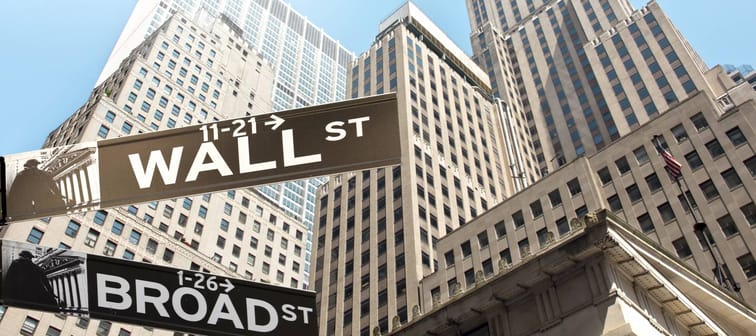An old strategy with a new name
SPACs are nothing new. They first started gaining traction among Canadian investors about 20 years ago, when they were known as “capital pool corporations.”
Despite the new moniker, SPACs and CPCs are essentially the same thing: a publicly-traded company whose sole purpose is to raise the funds it needs to merge with a private operating company, navigate the new entity through the IPO process and take it public.
When you invest in a SPAC, you’re not investing in a traditional company that produces goods or has a history you can track. You’re really buying shares in a concept: the kind of company the SPAC hopes to become. In that regard, it’s a highly speculative investment.
“Shareholders are basically betting on the credibility of the sponsor," Manoj Pundit, a securities partner at Borden Ladner Gervais LLP, said in a recent interview. "So if the sponsors make a poor choice, then of course the shares may go down in value."
A lot needs to go right for a SPAC to pop. The company targeted has to be worth taking public. The sponsors must have the know-how to get it over the finish line and be savvy enough to market it in a way that gets investors salivating. But the uncertainty hasn’t stopped investors from putting their faith in SPACs in recent years.
Between 2018 and 2019, $27.1 billion in investor capital went into SPACs, according to CB Insights. In 2020 alone, 254 SPAC filings raised $91.2 billion. They were set to have a monster 2021 — $102 billion poured into 298 filings in just the first quarter — but lost momentum when the U.S. Securities and Exchange Commission (SEC) laid out new accounting rules for SPACs in April 2021.
Fraud was at the heart of a recent SPAC controversy in the U.S.
The SEC had questions about the legitimacy of the information being shared with investors in a SPAC launched by Stable Road Acquisition Corp., which planned to merge with space transportation company Momentus in 2020. After projecting a $1.5 billion valuation, Stable Road wound up tangling with the SEC and paying it a $10 million settlement. Once the dust settled, the new entity was valued at around $875 million.
Those misses aren’t uncommon. An Intelligencer report about the SEC’s targeting of the sector found that “SPACs have created double-digit losses for most investors over time.”
The space remains intriguing, though. Online media giant BuzzFeed and social media app Nextdoor both recently announced they will be going public via SPAC. Electric vehicle producer Nikola, online real estate platform Opendoor and commercial spaceflight company Virgin Galactic all chose the SPAC route over the traditional IPO process, too.
Empower your investments with Qtrade
Discover Qtrade's award-winning platform and take control of your financial future. With user-friendly tools, expert insights, and low fees, investing has never been easier.
Start Trading TodayWhat’s the benefit for businesses?
Rolling out an IPO can be a complex, monstrously expensive process that many companies don’t have the capacity or capital to undertake themselves. An IPO requires myriad underwriters, attorneys, accountants and tax professionals, each one receiving a cheque for their efforts.
There’s also the matter of raising enough investor capital to fund an IPO, a time- and energy-consuming process whose outcome is never guaranteed.
The SPAC’s managers provide the experience and multi-dimensional expertise needed to thread the business through the eye of the IPO needle.
“It's convenient for the company, it's a lot less risky and it's a lot less time consuming,” says Len Zapalowski, partner at Vancouver-based boutique investment bank Strategic Exits.
Getting into SPACs as an investor
Most SPACs tend to offer shares in the range of $10 USD, which makes investing in them, and the companies they eventually become, a rather cheap bet.
The SPAC that acquired BuzzFeed, for example, 890 Fifth Avenue Partners, raised an initial $287 million USD in $10 increments in January. It’s fair to assume that the company’s eventual IPO, which is being valued at $1.5 billion, will cost investors significantly more than $10 a share.
Zapalowski says the highly granular information contained in a SPAC’s prospectus, part of the S-1 form that gets filed with the SEC, gives investors a relatively strong impression of the kind of company it will eventually try to take public.
“They get quite specific about what they want,” he says.
Even with detailed data at your disposal, choosing the right SPAC can be tough. You can evaluate a SPAC based on its management team’s track record, but putting your money in before knowing what company is going to be acquired is always going to be somewhat of a blind bid.
Unexpected vet bills don’t have to break the bank
Life with pets is unpredictable, but there are ways to prepare for the unexpected.
Fetch Insurance offers coverage for treatment of accidents, illnesses, prescriptions drugs, emergency care and more.
Plus, their optional wellness plan covers things like routine vet trips, grooming and training costs, if you want to give your pet the all-star treatment while you protect your bank account.
Get A QuoteTake your time
But you don’t need to dive headfirst into a SPAC the moment it starts attracting capital. Once it’s been launched, a SPAC has two years to find a company and acquire it. If it fails, investors get their money back.
“There's really no reason to get in at the beginning, unless you really like the management team,” says Zapalowski. “You can get in when they're running out of time, or when they make the [partnership] announcement.”
Early investors do, however, get access to contracts known as warrants, which give them the right to purchase a certain number of additional shares of common stock from the company at a certain price in the future.
Warrants are nifty sweeteners, but nothing about the SPAC process guarantees the successful performance of a new entity — or its stock. SPACs mitigate risk for companies, but not so much for investors.
Trade Smarter, Today
Build your own investment portfolio with the CIBC Investor's Edge online and mobile trading platform and enjoy low commissions. Get 100 free trades and $200 or more cash back until March 31, 2025.








